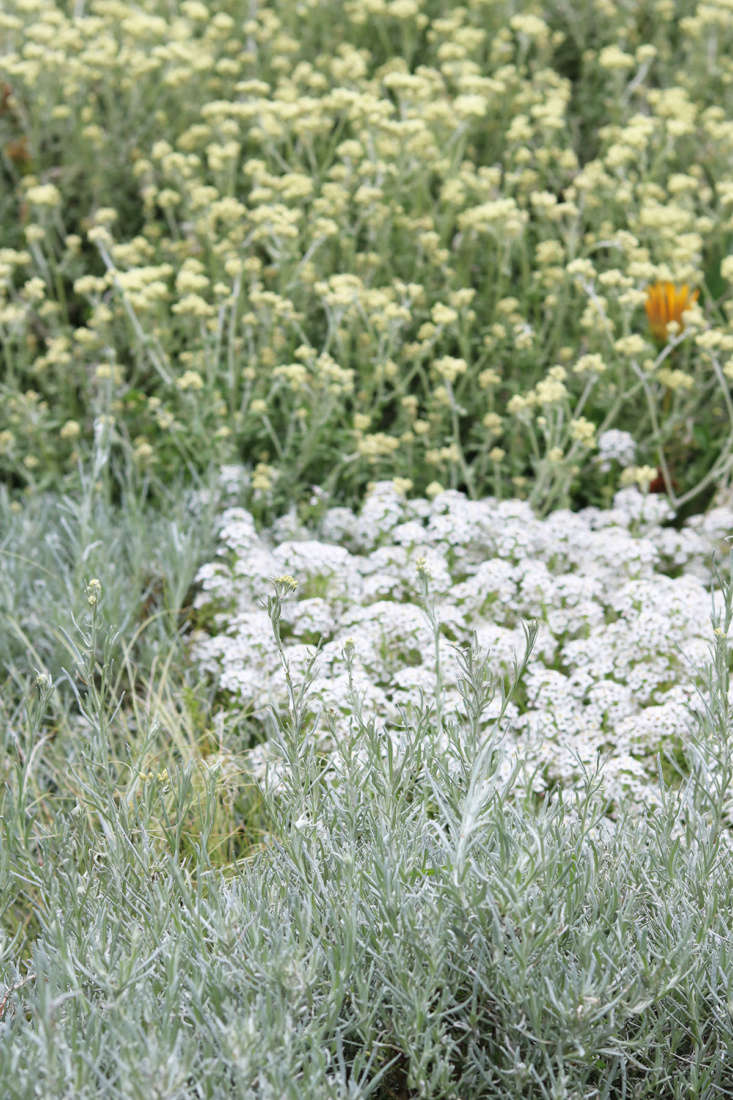Soothing, silvery, and elegant, one of the most beautiful and useful colors in the garden is gray. It is complex and variable, and often works skillfully in the background to make other plants look a lot better than they would on their own.
Here are 10 top picks for gray gardens in sun and shade, to expand your landscape’s horticultural palette:
Photography by Marie Viljoen, except where noted.
Artemisia


Artemisia in all its variation (there are many species) belongs to the A-List of silver-leafed plants. Its feathery leaves define textural delicacy while the fine-cut surfaces manage to glow and offer shadow at the same time.
Cotyledon


Salvia

S. clevelandii‘s numerous hybrids are now sold in the nursery trade internationally. Its fragrant gray leaves are topped throughout summer by tubular flowers of clear lavender-blue, and much loved by pollinators and hummingbirds. Tolerant of dry spells, and intolerant of overwatering, it can grow three to five feet wide and benefits from cutting back, sending out new shoots to replace woodier stems. Cleveland sage is hardy from USDA zones 8 to 10.
Sage

Society Garlic

Curry Bush

Helichrysums favor Mediterranean climates (with winter rainfall and summer dry spells), and require full sun. They also grow very successfully as annuals in regions with bitter winters.
Rose Campion


Rockrose

Silver Spurflower

Cobweb Spiderwort

Cardoon

Globe Artichoke

N.B.: This post is an update; it was first published February 2019.
See more of our favorite blue and purple flowers to complement silvery foliage in Lavender 101, Salvia 101, and Thistle 101 in our curated design guides to Perennials 101. Read more about successful plant pairings:
- Everything You Need to Know About Cottage Gardens
- Russian Sage: A Field Guide to Planting, Care & Design
- 10 Easy Pieces: Gray Flowers
- The Color Purple
- 10 Things Nobody Tells You About Succulents








Have a Question or Comment About This Post?
Join the conversation